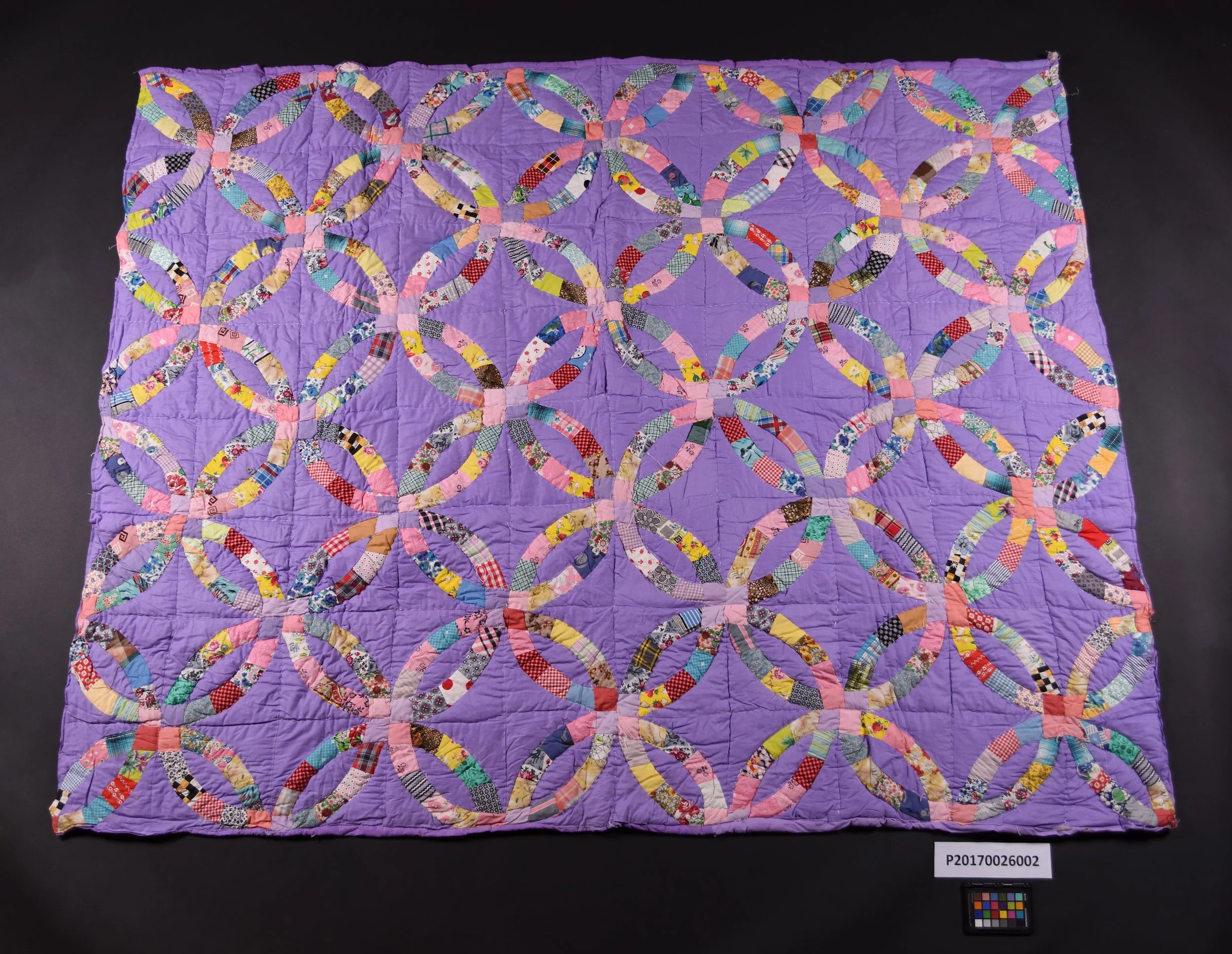Made by Hand
People make things for all sorts of reasons: as their livelihood, as a creative outlet, out of necessity or even boredom. Whether paid or unpaid, making things can become an essential part of a maker’s identity.
Industrialization and mass production had a major impact on artisanal or craft industries in the twentieth century. For example, Robert Gammon apprenticed with his father for five years to become a blacksmith; after a career in the coal mines, he opened his own shop in Lethbridge in 1940. Gammon was among the last practicing blacksmiths in southern Alberta, earning most of his income shoeing horses for farmers. Today skills such as blacksmithing have largely disappeared except as specialized trades.
Some techniques were maintained as a way to pass on traditions within a family or culture. Elsie Morris donated a bag to the Galt Museum, made from woven strips that her grandmother brought to Canada from Russia in 1899. The strips were originally made in the 1870s to decorate the hems of petticoats worn by Doukhobor women. They were passed onto Morris’ mother, Elizabeth Konkin, who made them into a bag for her knitting goods in the 1940s.
Made In… (Stories of Stuff) exhibit logo.
Designed by one match fire
Meanwhile, other forms of making have been reclaimed in defiance of mass production—part of broader trends toward conscious consuming, crafting or the do-it-yourself movement. Barb Cavers donated Christmas ornaments she made in the 1970s with her children; she recalled the decade as a time when people were doing a lot of macrame, knitting and sewing in order to have more natural things that were not mass produced.
Handmade goods can range from functional to expressive to ingenious, blurring categories such as art and craft. But they all share something in common: a connection between objects and their creators that makes each piece unique.













Dr. Frank Hamilton Mewburn was a wiry and fiery surgeon, politician, army officer, and university professor who greatly contributed to the development of Lethbridge. Mewburn came from a long ling of medical professionals, graduating from McGill University in Montreal in 1881.